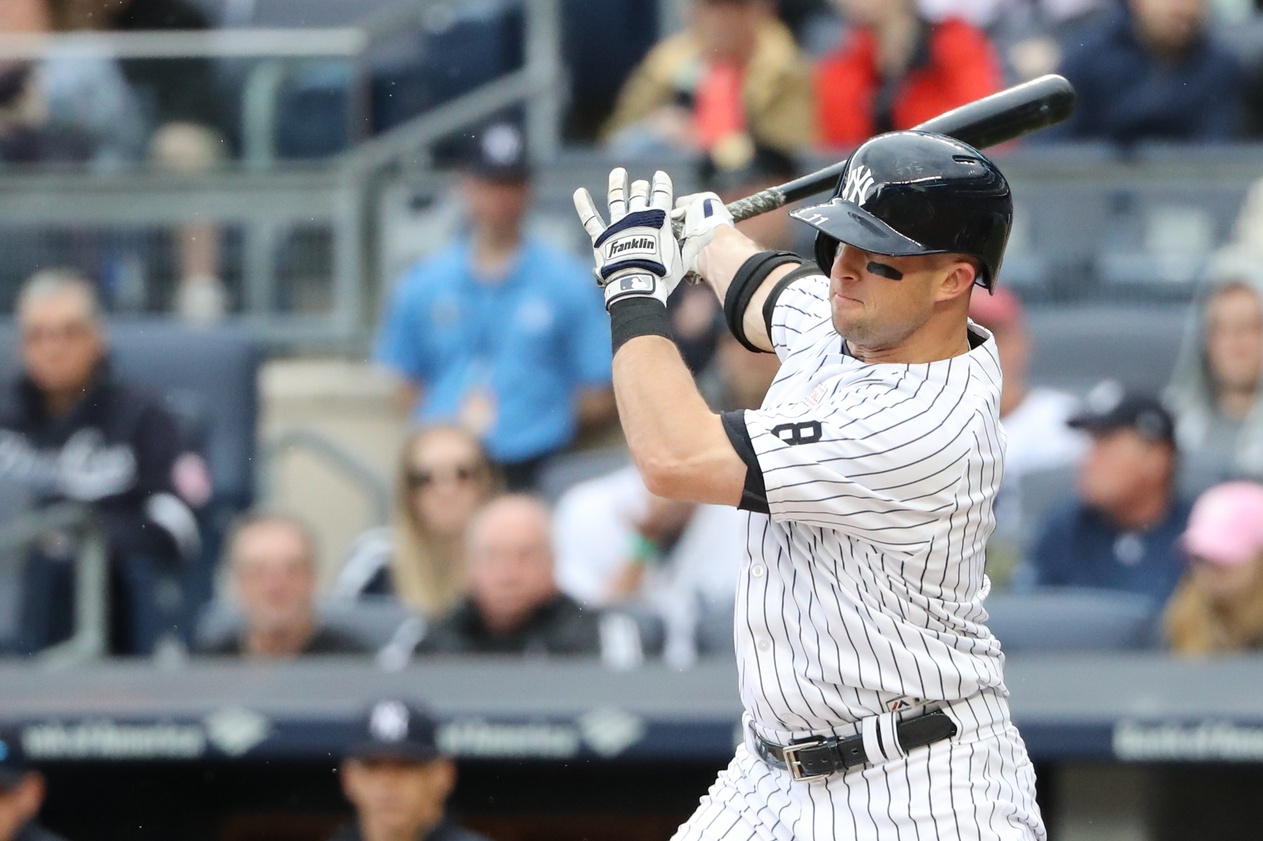Yes, I know it’s still early. And yes, I know that I mention that fact in every single post. However, certain stats stabilize quicker than others, and it’s starting to become late enough in the season that deviations might start signaling actual changes.
Specifically, this relates to Brett Gardner, who is quietly having what might be the best year of his entire career. It’s very easy to break up Gardner’s career into two tidy halves. Gardner has played at least 100 games in six different seasons — 2009-11 and 2013-15. His 2012 season was basically non-existent due to elbow injury, and at this current point in time, that 2012 season stands as a perfect midway point between Gardner’s two career halves.
| 2009-11 | 2013-15 | 2016 | |
|---|---|---|---|
| BB% | 11.5 | 9.3 | 14.2 |
| K% | 16.2 | 20.8 | 18.4 |
| ISO | 0.107 | 0.150 | 0.147 |
In 2009-11, Gardner was essentially a contact hitter with patience, striking out roughly 16 percent of the time with an isolated slugging mark hovering just above .100. However, after the one-year layoff in 2012, Gardner came back a slightly different guy in 2013. He kept his signature patience, with the walk rate down slightly but still in the vicinity of old-Gardner (who was technically young-Gardner). However, he traded contact in for power. His strikeout rate has perched above 20 percent in each season between 2013 and 2015, while his isolated slugging over that time has jumped to .150.
In 2016, Gardner has kept only the good from his two career halves, while throwing out all of the bad. He has kept a lower strikeout rate than from his “power” self in 2013-15, but he has maintained the same power that was missing from his early self. In addition, not only has he maintained his patented plate discipline, but he has actually improved upon it. The plate discipline numbers bear that out. Gardner owns a career chase rate of 22.1 percent, which is decidedly better than league average. However, he has improved that so far in 2016 to a career-best 15.8 percent. (For reference, Joey Votto led the MLB last season with a 19.1 percent chase rate.) Gardner has also stopped swinging-and-missing at strikes. No, really. His zone-contact percentage is a ridiculous 97.0 percent so far this year. As your Little League coach probably told you, swinging at more strikes and fewer balls is a recipe for success.
So why hasn’t that success been more apparent for Gardner so far this season? Most of it has to do with bad BABIP luck, actually. His BABIP in 2016 is a very depressed .279, which is a far cry below his career mark of .318. And the low BABIP isn’t due to a change in batted-ball profile, either. It can really be explained by the fact that Gardner hasn’t beaten out a single infield hit yet this season, and by the other various machinations of BABIP in small samples. Gardner has stolen seven out of eight bags successfully, so he probably isn’t slower than before. If we regress Gardner’s 2016 BABIP to his career mark, that adds three to four hits to his season line. An additional four hits would push his batting average from .241 to .276, while his OBP would jump from .371 to .397. Suddenly, we’re looking at an .800+ OPS version of Brett Gardner that still adds value by wreaking havoc on the bases and playing quality defense.
And that, my friends, is the definition of a star in this league, should Gardner maintain this offensive profile throughout the rest of the season. The approach is here; the results will follow. Just give it time.
Photo: Anthony Grupposo / USA Today Sports
